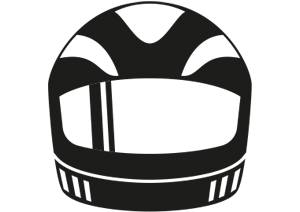-
MenuBack
-
COLLECTIONS
-
-
24h00 Le Mans
-
Alpine A110 1600S
-
Lancia 037
-
-
-
FULL KIT
-
-
FULL KIT
-
-
- ACCESSORIES
- Australian
- MAQMADON
-
Assembly guides
-
-
Blog Ixo
-
- FAQ
THE 1973 MONTE CARLO RALLY
THE 1973 MONTE CARLO RALLY
ON THE WAY TO GLORY
The ‘Berlinettes' hat-trick of victories in the 42nd Rally of Monte Carlo was the prelude to an exceptional season that would culminate in a world title.

To increase the visibility of rallies to the general public, the International Sporting Commission decided to organise a new world championship for the 1973 season with a ranking reserved exclusively for car manufacturers. This championship, open to cars from Group 1 to 4 (Group 5 prototypes were not admitted), consists of 13 highly varied races, with the season starting as usual with the Monte Carlo Rally. The best 10 competitors at each event score points (20, 15, 12, 10, 8, 6, 4, 3, 2 and 1), but only the result of a manufacturer's best-ranked car was taken into account. At the end of the season, the 9 best results per manufacturer would be taken into account. The obligation to participate in the entire championship was not applicable at the time, so Alpine-Renault decided to participate in only 10 events in 1973 to limit the available budget of its racing department.

Anderson battled for victory with Andruet during the special stages that were run on particularly snowy roads. © IXO Collections SAS - Tous droits réservés. Crédits photo © Renault D.R. / Archives et Collections
Serious competition
The 1973 Monte Carlo rally, which took place from 19 to 26 January, was the very first event in the history of the World Rally Championship (later known as the WRC). A total of 279 cars took part, mostly made up of amateur drivers. Among the officially present manufacturers were the main protagonists of the previous editions. In Group 4 (Grand Tourism Special) : Alpine-Renault (Berlinette A110 1800), Fiat (124 Rallye), Lancia (Fulvia 1600 HF) and Datsun (240 Z) and in Group 2 (Tourism Specials): Ford (Escort RS 1600), Renault (R12 Gordini) and Opel (Commodore GS/E). The Alpine-Renault factory team participated with five cars including Jean-Luc Thérier and Marcel Callewaert (No 4), Ove Andersson and Jean Todt (No 15), Bernard Darniche and Alain Mahé (No 1), Jean-Pierre Nicolas and Michel Vial (No 21) and Jean-Claude Andruet and "Biche" (No 18). Added to these some "semi-official" riders like Jean François Piot, and "clients" like Bob Neyret or Bob Wollek. In total, no fewer than 38 Alpine Berlinettes lined up at the start, including ten A110 1800s, but only 12 crossed the line at the finish.

The Berlinette 1800 of Bob Wollek and Pierre Thimonier was the highest-placed private Alpine, finishing 14th overall. © IXO Collections SAS - Tous droits réservés. Crédits photo © Renault D.R. / Archives et Collections
The concentratic route
In preparation for the rally, participants had a choice between nine European cities where concentratic routes started from Friday 19 to Sunday 21 January: Almeria, Athens, Frankfurt-Hanau, Glasgow, Monte Carlo, Oslo, Reims, Rome and Warsaw. The distances to be covered ranged between 2,463 and 2,735 km depending on the starting city and the Alpine team chose to start in Monaco (at 17:23). All the joint routes converged on Sunday morning at 7.30am in Digne from where a special opening stage of 17km around the Col de Corobin was held. The start was given following the order of arrival of the concentration routes. When Team Alpine arrived at the start, the road surface was covered with ice, which was not the case when it was the turn of the Fords and Lancias. The Alpine of Andruet - "Biche" finished in only 6th place at the end of this first part of the rally, 33 seconds behind the Lancia of Sandro Munari who led the provisional leaderboard.

Alpine's historic triumph at the Monte Carlo Rally was a great showcase for the Renault sales network. © IXO Collections SAS - Tous droits réservés. Crédits photo © Renault D.R. / Archives et Collections
A twisty finish
The competitors faced each other after a day and a half of rest on the shared course, which stretched 1,653 km and included 25 stages, including eight specials over 235 km. While Mikkola's Ford dominated during the first two stages, Andruet recaptured the lead on the Burzet stage, during which weather conditions were such that 140 teams were eliminated. On Wednesday evening the 24th, Alpine drivers Andruet, Anderson and Nicolas took the lead in the provisional classification. The three "Berlinettes" were less than three minutes apart and Alpine wished to avoid a fratricide. Despite a call for restraint, Ove Anderson, winner of the 1971 edition, was determined to repeat his performance. The race was decided during the extra races on January 25 and 26 over 11 stages covering 653 km, including eight special stages over 153 km. Over two stages, Anderson regained 15 seconds on Andruet, who suffered a puncture on the Col du Turini. The latter dropped back to 3rd place and thought victory was slipping away from him when Anderson suddenly slipped off the road on the Col de la Couillole. During the final passage on the Turini, Andruet recaptured 34 seconds on Anderson and took the overall lead. During the final classification stage on the Col de la Madone, Andruet covered 18 km in 15 minutes and 11 seconds, breaking Nicolas' record from 1970 (16 min 3 s). With this performance, he completed the rally in 5 h 42 min and 04 s.
For more information...
World champion
The first-ever World Rally Championship, awarded exclusively to manufacturers from 1973 onwards, was won by Alpine-Renault at the end of a season with a legendarily high level of competition. The A110 1800 Berlinette dominated the championship by winning six of the 13 races: Monte Carlo (Jean-Claude Andruet), Portugal, Acropolis and San Remo (Jean-Luc Thérier), the Tour of Corsica (Jean-Pierre Nicolas) and Morocco (Bernard Darniche). In addition, Darniche won the Rally of Austria, but was relegated to second place by the CSI. In the final classification, Alpine scored 147 points, followed by Fiat (84 points) and Ford (76 points). Although the World Rally Drivers' Championship title was not awarded until 1977, Jean-Luc Thérier was the unofficial winner in 1973, due to his brilliant performance that year.

From the beginning of 1974, the Renault company highlights Alpine's extraordinary success during the World Rally Championship with full-page advertisements.© IXO Collections SAS - Tous droits réservés. Crédits photo © Renault D.R. / Archives et Collections
"Biche"
Michèle Espinosi-Petit, nicknamed "Biche", was Jean-Claude Andruet's loyal co-pilot for ten seasons. They formed a remarkable team driving international races at the highest level. This outstanding navigator was born on 28 September 1948 in Crémieu in the Isère, not far from Lyon, where her father was a car expert. She acquired her first racing experience at the 1966 Geneva Rally, driving with Gérard Larrousse. The following year she met Andruet and from 1972 she became his regular navigator. From 1973 to 2013, she participated in 23 world championships and won two: Monte Carlo 1973 (Alpine) and Tour de Corse 1974 (Lancia Stratos HF) together with Andruet. Earlier, they were jointly crowned French champions in 1972. She also won six rallies in the European Championship and eight in the French Championship.

"Biche" and Jean-Claude Andruet savour their victory in the 1973 Monte Carlo Rally. © IXO Collections SAS - Tous droits réservés. Crédits photo © Renault D.R. / Archives et Collections
The Alpine team
Alpine's racing department was located in a hall of the Dieppe factory and was managed by Jacques Cheinisse, who was affectionately called "Papa" by the drivers. Just before the start of the World Rally Championship, Alpine officially became Alpine-Renault after the Régie acquired a share in the company. Around Jacques Cheinisse was a remarkably close-knit team, starting with the 20 or so mechanics led by Gilbert Harivel, head of the competition workshop, a "veteran" who joined Alpine in 1957. Camaraderie also prevailed among the team of factory drivers, the famous "Mousquetaires" Darniche, Nicolas, Andruet and Thérier. Thérier proposed that the prize money be divided equally after each race, regardless of each driver's result.

Alpine's competition department in 1973. Jean-Luc Thérier (3rd from left) in the second row, next to Bernard Darniche, Jean-Pierre Nicolas and Jacques Cheinisse.© IXO Collections SAS - Tous droits réservés. Crédits photo © Renault D.R. / Archives et Collections
The Group 4 1800 Berlinette
The Berlinettes officially registered by the Alpine team are all A110 1800 type approved for Group 4 (Special Grand Tourism cars). For 1973, the racing department produced 24 units of this model: 15 chassis used in the World Championship, 6 "mules" (spare cars) and 3 "customer competition" units. Despite its 1800 engine, the 1973 Alpine Group 4 is a "1600 VC" mine type. The 844 block, from the Renault 16, was by Marc Mignotet who increased the engine capacity to 1,798 cm3 (bore 82.5 mm x stroke 84 mm), thereby offering a power of 175 bhp at 6,500 rpm, which allowed a top speed of over 250 km/h. The chassis manufactured in the Thirons-Gardais factory are available in three types: ultra light, light mixed or heavy. Externally, the 1800 is distinguished by its enlarged fenders and large Michelin Racing tyres.

Six Berlinettes 1800 ( five of them being factory cars) are classified among the first ten cars at the finish. In this picture, the Thérier-Callewaert team who finished 5th. © IXO Collections SAS - Tous droits réservés. Crédits photo © Renault D.R. / Archives et Collections

Jean-Claude Andruet
Jean-Claude Andruet, born in Montreuil on 13 April 1940, made his debut in 1965 driving a Renault 8 Gordini. His reputation as an eclectic and gifted driver was always great and he distinguished himself in numerous international Rally, Circuit and Hillclimb races. He was French Rally Champion in 1968, 1970 and 1972 and European Champion in 1970 driving an Alpine Renault. He then continued his career with Fiat, Lancia and Ferrari until 1994, often accompanied by his faithful navigator "Biche". From 1973 to 1995, he participated in 29 World Cup rallies, of which he won three: Monte Carlo 1973 (Alpine), Tour of Corsica 1974 (Lancia Stratos HF) and San Remo 1977 (Fiat 131 Abarth). In addition, he won 17 European Championships and 28 French Championships. He also competed 19 times in the 24 Hours of Le Mans between 1967 and 1989, his best result being 5th place in 1972 (Ferrari 365 GTB4) and 1981 (Ferrari 512 BB LM).

GENERAL CLASSIFICATION
1 er : Jean-Claude Andruet - «Biche» (Alpine A110 1800)
2e : Ove Andersson - Jean Todt (Alpine A110 1800)
3e : Jean-Pierre Nicolas - Michel Vial (Alpine A110 1800)
4e : Hannu Mikkola - Jim Porter (Ford Escort RS 1600)
5e : Jean-Luc Thérier - Marcel Callewaert (Alpine A110 1800)
6e : Jean-François Piot - Jean-Louis Marnat (Alpine A110 1800)
7e : Raffaele Pinto - Arnaldo Bernacchini (Fiat 124 Abarth Rallye)
8e : Harry Källström - Claes Billstam (Lancia Fulvia 1600 Coupé HF)
9e : Tony Fall - Mike Wood (Datsun 240 Z)
10e : Bernard Darniche - Alain Mahé (Alpine A110 1800)
Articles récents
Share this post





 Français
Français Anglais
Anglais Allemand
Allemand Espagnol
Espagnol Italien
Italien Portugal
Portugal


